Alisha Menon
Efficient emotion recognition using hyperdimensional computing with combinatorial channel encoding and cellular automata
Apr 06, 2021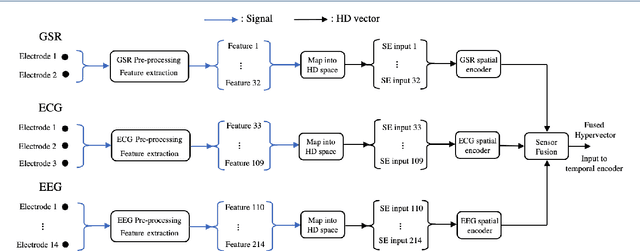
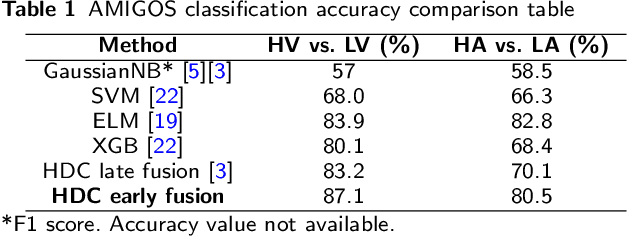
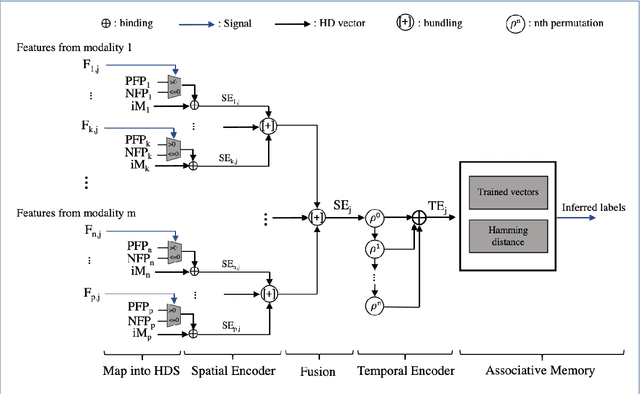

Abstract:In this paper, a hardware-optimized approach to emotion recognition based on the efficient brain-inspired hyperdimensional computing (HDC) paradigm is proposed. Emotion recognition provides valuable information for human-computer interactions, however the large number of input channels (>200) and modalities (>3) involved in emotion recognition are significantly expensive from a memory perspective. To address this, methods for memory reduction and optimization are proposed, including a novel approach that takes advantage of the combinatorial nature of the encoding process, and an elementary cellular automaton. HDC with early sensor fusion is implemented alongside the proposed techniques achieving two-class multi-modal classification accuracies of >76% for valence and >73% for arousal on the multi-modal AMIGOS and DEAP datasets, almost always better than state of the art. The required vector storage is seamlessly reduced by 98% and the frequency of vector requests by at least 1/5. The results demonstrate the potential of efficient hyperdimensional computing for low-power, multi-channeled emotion recognition tasks.
Adaptive EMG-based hand gesture recognition using hyperdimensional computing
Jan 02, 2019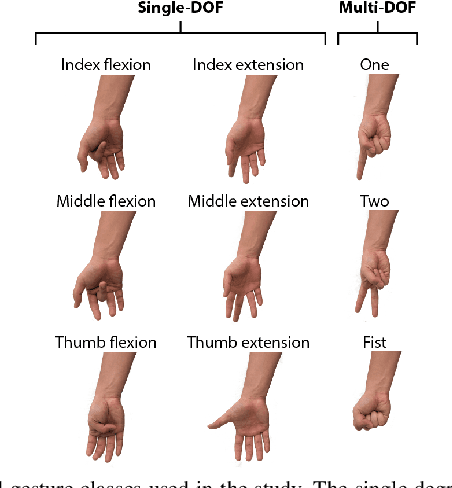


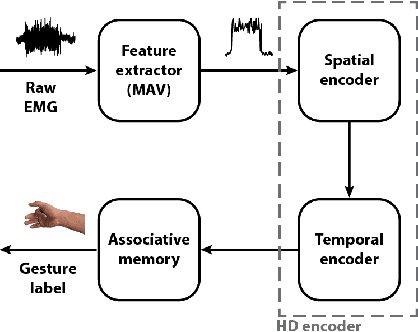
Abstract:Accurate recognition of hand gestures is crucial to the functionality of smart prosthetics and other modern human-computer interfaces. Many machine learning-based classifiers use electromyography (EMG) signals as input features, but they often misclassify gestures performed in different situational contexts (changing arm position, reapplication of electrodes, etc.) or with different effort levels due to changing signal properties. Here, we describe a learning and classification algorithm based on hyperdimensional (HD) computing that, unlike traditional machine learning algorithms, enables computationally efficient updates to incrementally incorporate new data and adapt to changing contexts. EMG signal encoding for both training and classification is performed using the same set of simple operations on 10,000-element random hypervectors enabling updates on the fly. Through human experiments using a custom EMG acquisition system, we demonstrate 88.87% classification accuracy on 13 individual finger flexion and extension gestures. Using simple model updates, we preserve this accuracy with less than 5.48% degradation when expanding to 21 commonly used gestures or when subject to changing situational contexts. We also show that the same methods for updating models can be used to account for variations resulting from the effort level with which a gesture is performed.
An EMG Gesture Recognition System with Flexible High-Density Sensors and Brain-Inspired High-Dimensional Classifier
Apr 05, 2018
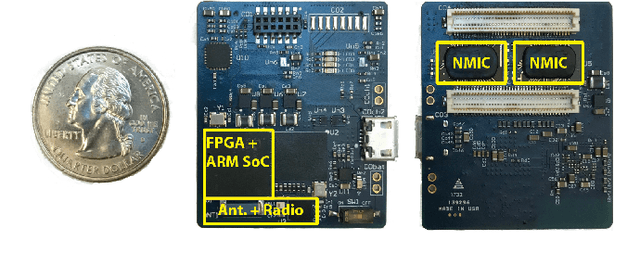

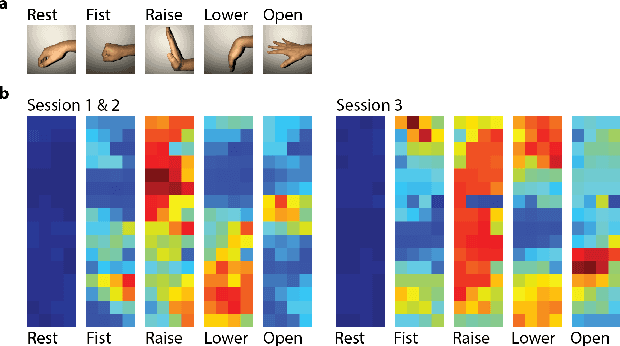
Abstract:EMG-based gesture recognition shows promise for human-machine interaction. Systems are often afflicted by signal and electrode variability which degrades performance over time. We present an end-to-end system combating this variability using a large-area, high-density sensor array and a robust classification algorithm. EMG electrodes are fabricated on a flexible substrate and interfaced to a custom wireless device for 64-channel signal acquisition and streaming. We use brain-inspired high-dimensional (HD) computing for processing EMG features in one-shot learning. The HD algorithm is tolerant to noise and electrode misplacement and can quickly learn from few gestures without gradient descent or back-propagation. We achieve an average classification accuracy of 96.64% for five gestures, with only 7% degradation when training and testing across different days. Our system maintains this accuracy when trained with only three trials of gestures; it also demonstrates comparable accuracy with the state-of-the-art when trained with one trial.
 Add to Chrome
Add to Chrome Add to Firefox
Add to Firefox Add to Edge
Add to Edge